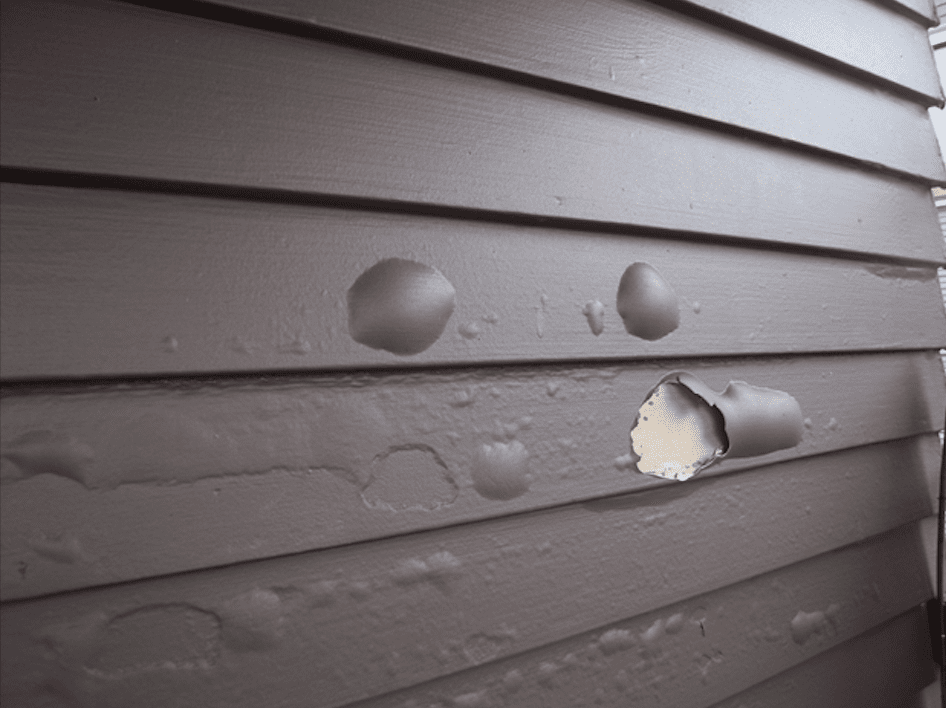Paint bubbling, also known as blistering, is a common problem that can occur when painting walls. It occurs when the paint forms bubbles or blisters on the surface, and it can be caused by a variety of factors. In this blog post, we will discuss the causes of paint bubbling and how to prevent and fix it.
Causes of Paint Bubbling
Moisture: One of the most common causes of paint bubbling is moisture. When the paint is applied to a surface that is not properly sealed or is already damp, it can cause the paint to blister and bubble.
Temperature: Extreme temperatures can also cause paint to blister and bubble. If the paint is applied when the temperature is too hot or too cold, it can cause the paint to dry too quickly or too slowly, leading to bubbling.
Improper Surface Preparation: If the surface is not properly cleaned and primed before painting, it can cause the paint to blister and bubble. This is because dirt, dust, and other contaminants can cause the paint to not adhere properly to the surface.
Poor Quality Paint: Using low-quality paint can also cause paint bubbling. A cheap paint may not have the same binding agents as high-quality paint, causing it to blister and bubble.
Preventing Paint Bubbling:
Proper Surface Preparation: The key to preventing paint bubbling is to ensure that the surface is properly cleaned and primed before painting. This will ensure that the paint adheres properly to the surface and does not blister or bubble.
Check for Moisture: Before painting, it is important to check for any signs of moisture on the surface. If there is any moisture present, it should be addressed and eliminated before painting.
Use High-Quality Paint: Using high-quality paint will help to prevent paint bubbling. This is because high-quality paint is more durable and has better binding agents than cheap paint.
Paint at the Right Temperature: Painting at the right temperature is crucial in preventing paint from bubbling. It is best to paint when the temperature is between 50 and 90 degrees Fahrenheit.
Fixing Paint Bubbling:
Sand the Surface: To fix paint bubbling, the first step is to sand the surface. This will help to remove any loose paint and create a smooth surface for the new paint.
Clean the Surface: Once the surface has been sanded, it should be cleaned to remove any dust or debris.
Apply Primer: Applying a primer to the surface will help to ensure that the new paint adheres properly and does not blister or bubble.
Apply Paint: Once the primer has dried, the new paint can be applied. It is important to use the same high-quality paint that was used to prevent the bubbling in the first place. It also depends on the skills of the painters for that you have to hire skillful painters. Such as Painters in Boca Raton Fl.
Keep an Eye: Once the paint has dried, it is important to keep an eye on the surface for any signs of bubbling or blistering. If any are found, it is important to address them immediately.
In conclusion, paint bubbling is a common problem that can be caused by a variety of factors such as moisture, temperature, improper surface preparation, and poor quality paint. To prevent paint bubbling, it is important to ensure that the surface is properly cleaned and primed, check for moisture, use high-quality paint, and paint at the right temperature. If paint bubbling occurs, it can be fixed by sanding the surface, cleaning it, applying primer, and applying new paint. It’s also important to keep an eye on the surface for any signs

As the editor of the blog, She curate insightful content that sparks curiosity and fosters learning. With a passion for storytelling and a keen eye for detail, she strive to bring diverse perspectives and engaging narratives to readers, ensuring every piece informs, inspires, and enriches.










